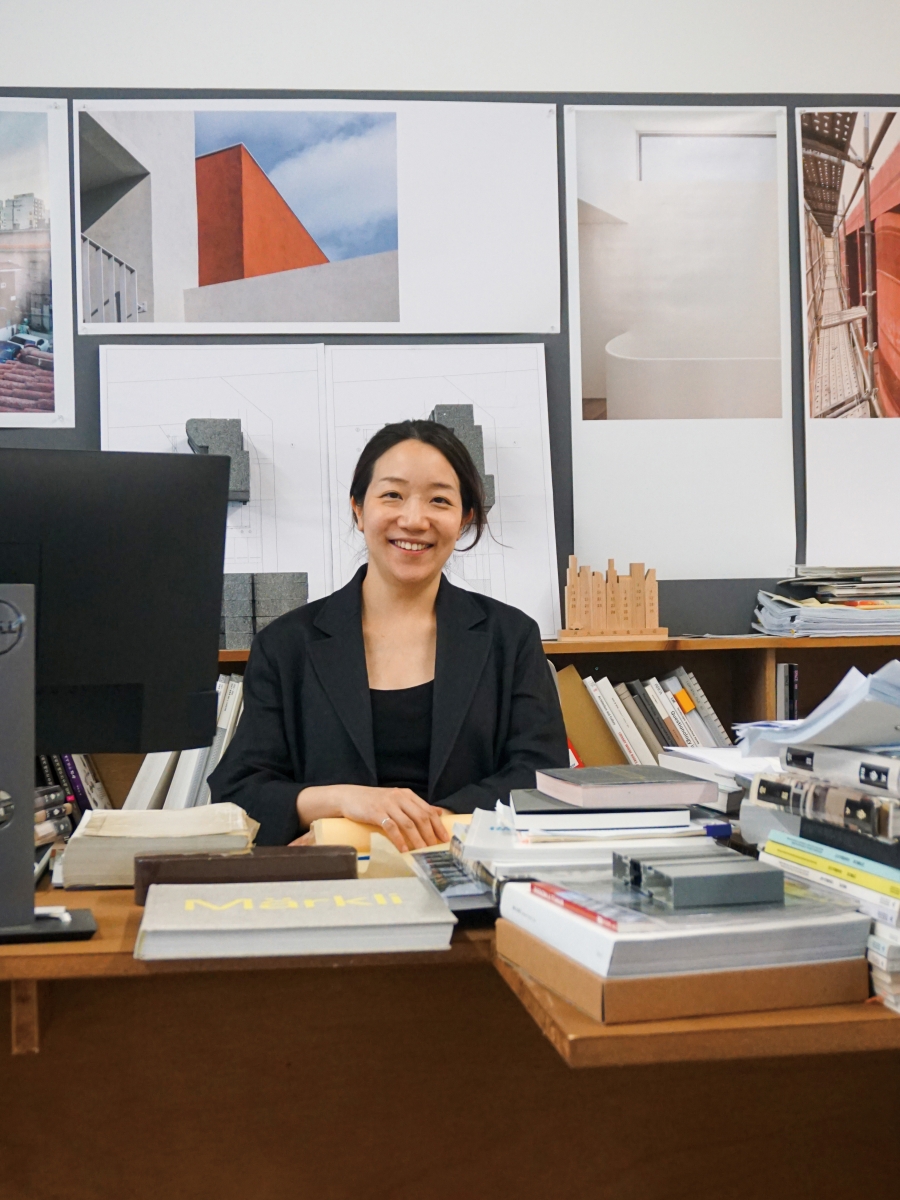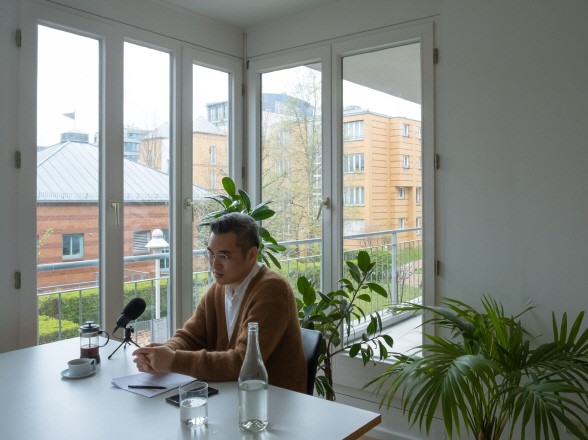SPACE July 2023 (No. 668)
ʻI am an Architectʼ was planned to meet young architects who seek their own architecture in a variety of materials and methods. What do they like, explore, and worry about? SPACE is going to discover individual characteristics of them rather than group them into a single category. The relay interview continues when the architect who participated in the conversation calls another architect in the next turn.
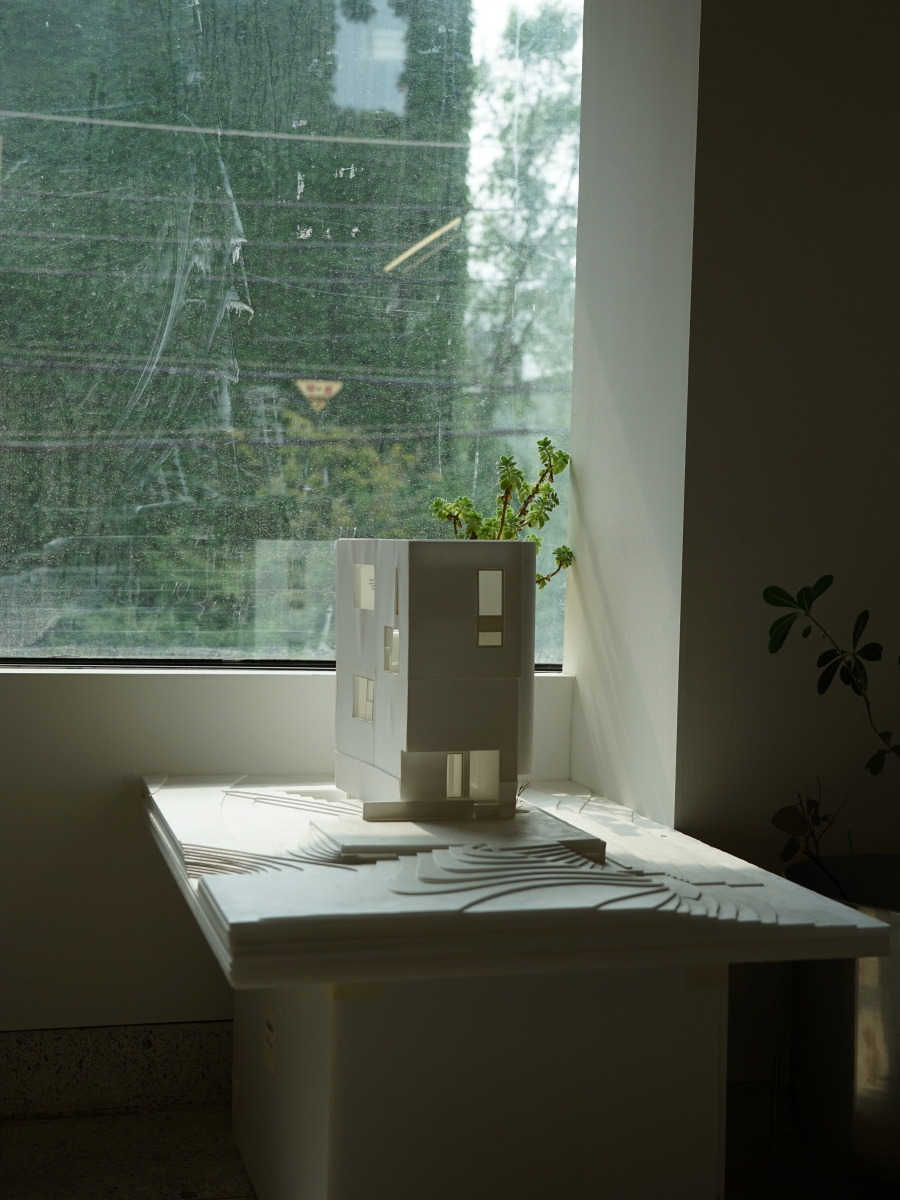
interview Seo Jamin principal, AGIT STUDIO × Youn Yaelim
Inquisitive Architect
Youn Yaelim (Youn): Your office is in a quiet alley. I heard you have been in Seongsu-dong for quite some time.
Seo Jamin (Seo): The former Seongsu-dong place was my third studio while it is my first office. It was where three of my friends in the architectural field worked when we were just starting out, and I have continued the meaning of it by opening AGIT STUDIO.
Youn: I am curious about your decision to open an independent office. You have said that your trip to South America just before opening was a significant moment in your architectural career.
Seo: I always had the idea of going independent, but I think it was just a matter of timing. The trip to South Amrica happened in 2017 when my partner and studio member, Huh Guenil, won an award from the T. S. Kim Architectural Fellowship Foundation. We traveled for a month and then I opened
the office. I think it was the right time.
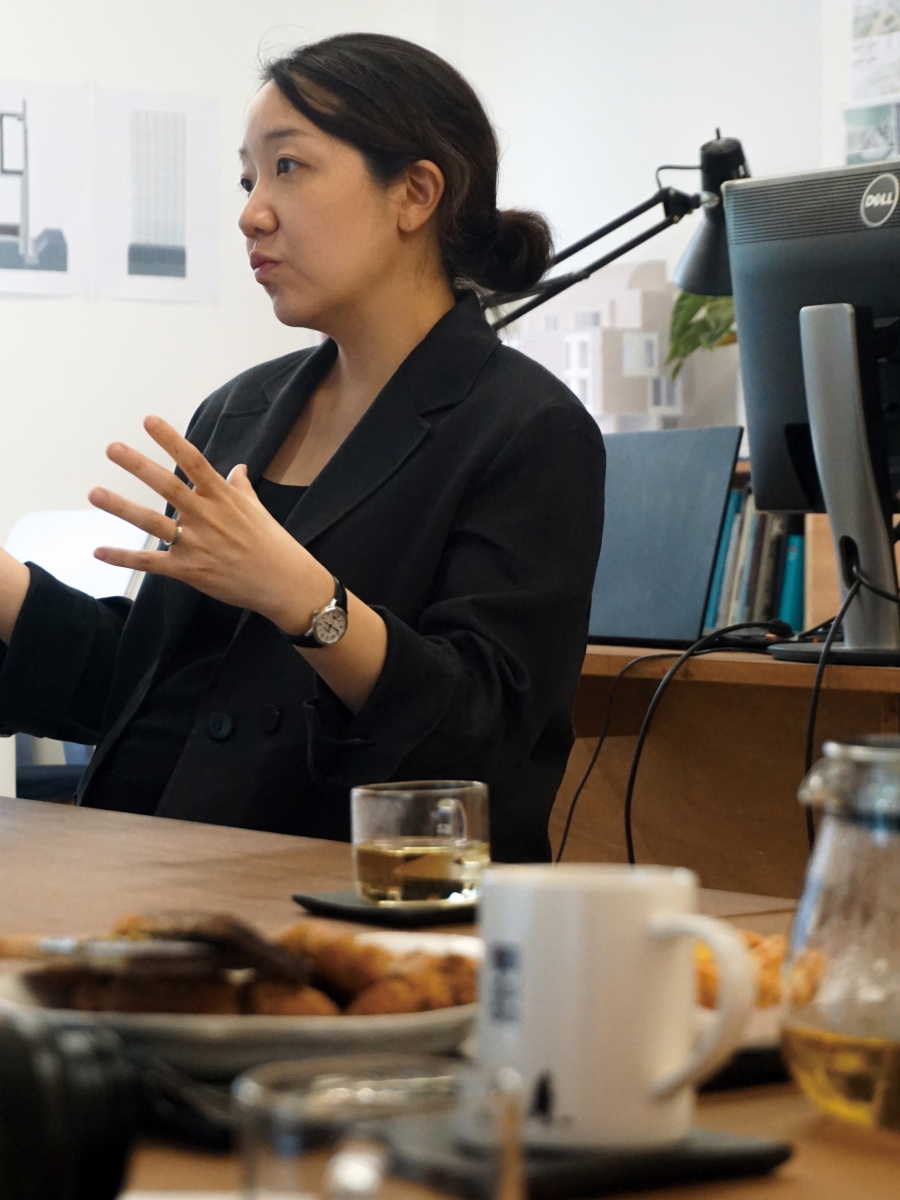
Youn: Did the travel have any meaning to you?
Seo: I chose South America as the destination for my trip because I wanted to see architecture that was happening on the raw, untouched soil, outside of the influence of modern architecture. I think I worked quite a long time as a practitioner, and I had a lot of questions inside me. If you think about it, most of what we call good architecture is deeply related to capital. For example, architecture that show the pinnacle of sophistication and completeness based on well-equipped systems. However, I wanted to see for myself that there was architecture of good quality even in countries where there are not enough capital and technology not as sophisticated.
Youn: How was your impression?
Seo: The roughness that originated from their unique society, and the aura were clearly felt in the architecture. I think it is the same direction AGIT STUDIOʼs projects pursue. At the base of AGIT STUDIOʼs design, there is a will to make a good plan as a mass and to create good work with the most common materials rather than using special materials.
Youn: The travel perhaps had a significant influence on the current AGIT STUIO.
Seo: I donʼt believe it brought about immediate changes. As an architect, if I were to describe the path I am pursuing, while new experiences in different parts of the world can enrich my perspective, they donʼt alter the direction I am committed to. No matter which world I experience, my driving force as a Korean architect is deeply rooted in Korean society. I only go one way and the questions are always inside me.
Youn: So you are putting the criteria inside instead of outside. What are the questions that you always carry within you as a Korean architect?
Seo: In Korea, especially in Seoul, peopleʼs perceptions and trends change more rapidly than in any other city in the world, and they seem to play a significant role in city. I believe that the diversity of meaningful solutions from individual architects will make our urban environments better in the future, and that is what AGIT STUDIO is striving for. We are asking a lot of questions and thinking about sustainable solutions, whether it is personal or social.
Youn: The series of renovation projects located in centre of city, from Concrete Library (2020) to Project: Re-interpret (2021), and Archived mass (2022), must be the result of intense questioning. Those works show a bold determination to deviate from the conventional path from materials and construction methods to the aesthetics of mass.
Seo: The projects represent our attitude towards the houses built in the 1970 – 1980s for developments that emphasized efficiency. It is significant that each one presented its own mass and tectonics with its own interpretations and narratives. Instead of looking at the problems facing each site as the same urban problem, we intensely questioned and wrestled with the social and personal implications.
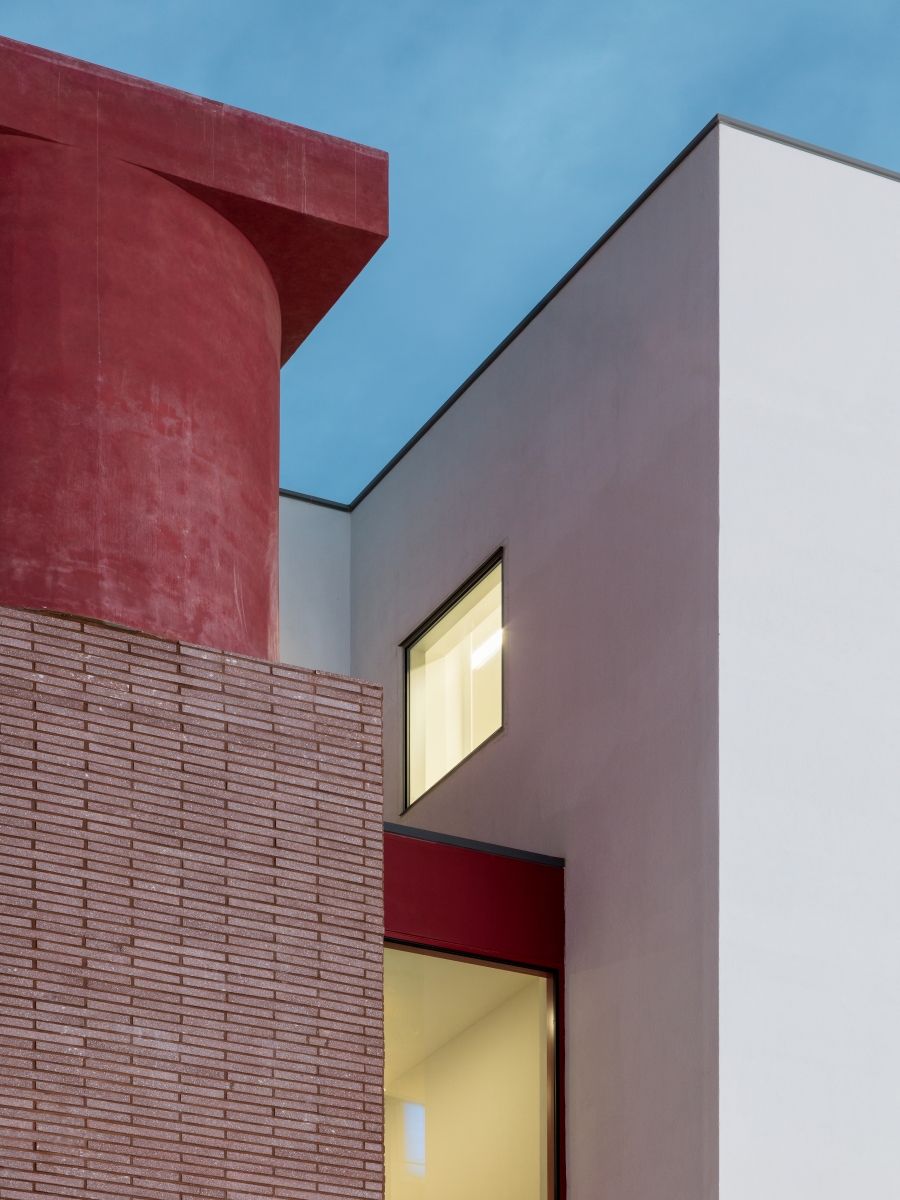
Project: Re-interpret / ⓒKyungsub Shin
Tenacious Architect
Youn: You recently wrapped up a project in Yangpyeong.
Seo: Project YP (2023) was a bit different in its approach from the militant approach to overcrowded urbanism of our previous works. It is located on a prime corner lot in an undeveloped neighbourhood. The project was driven by the question of how to make a more dominant and sustainable use of a natural green area where the building to land ratio is only 20%.
Youn: The circular core pretty stands out.
Seo: There were lots of studies about the positioning of the core, the volume, and the massing, because the core becomes the identity of the building, given the functional requirements and the limitations of the site. Also, if you look closely, you can see that the mass is divided into three parts, even though it is a small building. This is to create the intended massing within the height and storey limits. For each of the segmented masses, we processed the bricks into three different sizes: the original size, 1/2 size, and 1/3 size to create subtle textures by varying them. We even made a detail model to show the constructors.
Youn: Where does the strength to carry the initial intention through to the end come from?
Seo: Architecture is so much about mediation, consultation, and compromise. I try to delay compromises as much as possible, but it is not a problem that can be solved by just holding on to it. For example, in this project, I thought that using light-colored bricks would allow us to reveal the intended texture of the mass. There was a different material from what I originally wanted to use. However, due to budget constraints, I spent several days trying to find a material that could produce the intended effect and replaced it. Itʼs all about finding ways.
Youn: Meanwhile, you always write about your projects or travels on social media.
Seo: Iʼve always loved to write since I was a kid. To deliver my thoughts, I think writing is one of my best tools. As long as I have the ability, it is always my goal to express and communicate my important architectural thoughts in writing. I donʼt know what form it will be, or when it will be.
Youn: It seems like a goal that can be achieved even now.
Seo: I always want to write more, but itʼs not easy to take time into it. I think Iʼm in a different mode when Iʼm immersed in architectural work and when Iʼm focused on writing. I think I need a little more space and ability to write something good.
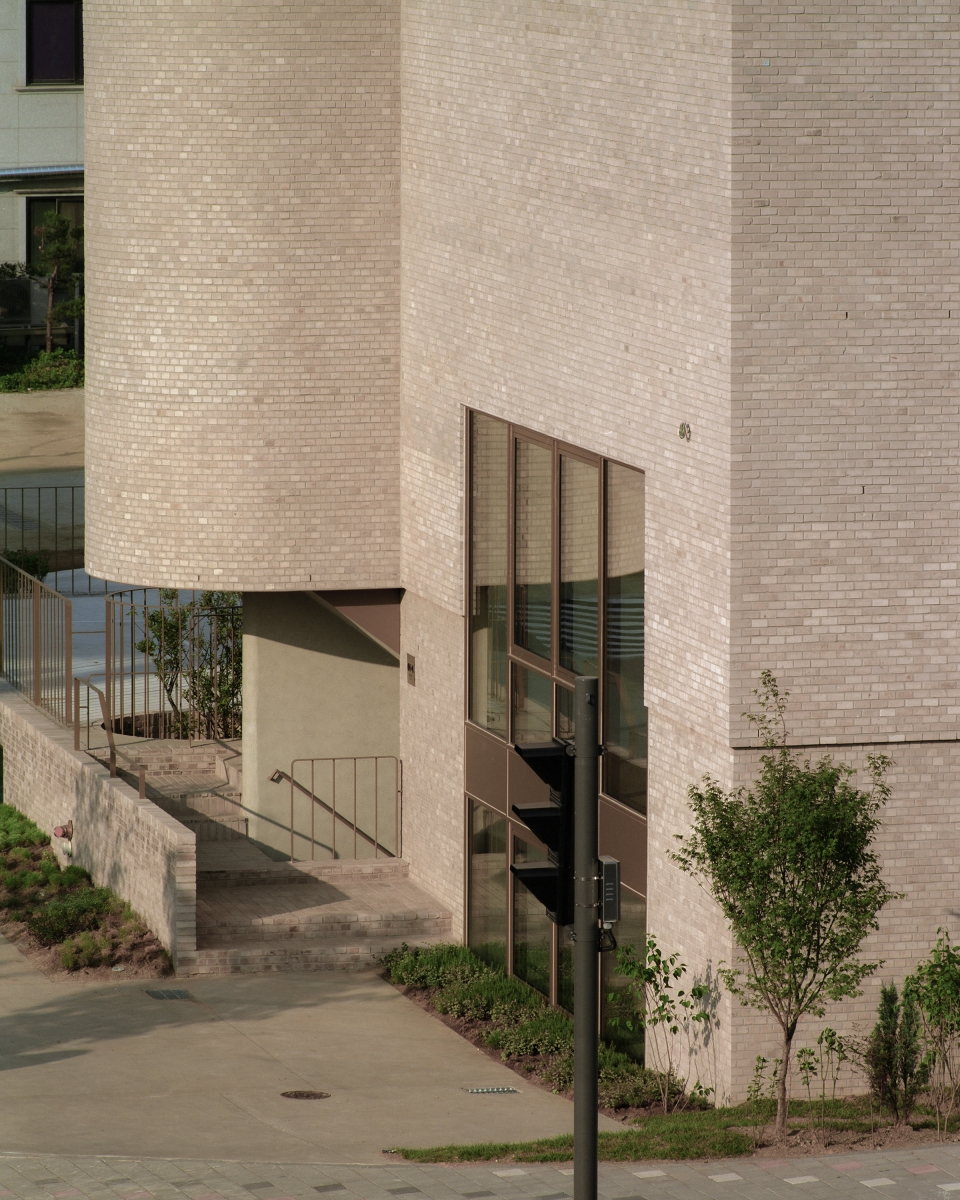
Project YP / ⓒPHSG
Tracing Footsteps
Youn: Tell us about your time in Switzerland for the past year in 2021. What was on your mind when you left?
Seo: With the support of the government, there was an opportunity to live abroad for a year and continue the work of AGIT STUDIO. Huh Guenil, a guest partner of AGIT SUDIO, came with me to work for a local architectural firm, Stocker Lee Architetti (co-principals Melanie Stocker, Lee Dongjoon). However, I didnʼt go to Switzerland with any architectural aspirations or beautified ideas about it. I was just curious to see what it would be like to be an architect in the dense, tight society of Seoul and then find myself in a completely different environment. What I actually observed was two very different societies and their inevitably different architecture.
Youn: Somehow your trip to South America overlaps. You closely observe the social context of the world where architecture different from ours is taking place.
Seo: Architecture is inherently intertwined with the society in which it is placed, sharing a common destiny. Rather than judging the superiority of architecture without considering its diverse historical and social backgrounds, the focus should be on understanding the origins of those differences. The important thing is to come back with that problem and think about how to create meaningful architecture in Korea and Seoul. Architecture of Switzerland is very different from contemporary architecture, which is born out of high density and complex systems like Korea. In each small rural area, local administrative, legal, and handicraft elements have become the foundation of local architecture and are alive.
Youn: I heard that the region you lived in was the stomping ground of Mario Botta.
Seo: I lived in the region of Mendrisio, literally Mario Bottaʼs neighbourhood, with his office, his works, and even the schools he established. The impressive lineage of Mario Botta, the architects who worked under him, and the local architects continued one after another. It was a time when the narratives of life intertwined across four to five generations, giving a sense of moving together.
Youn: Itʼs fascinating how you, as an outsider, could naturally blend in among the established local architects.
Seo: I had a lot of architectural experience, so I was able to go to another country and hit the mark, take the lead. I was able to have explicit conversations with local architects as a professional architect who has been working for over a decade. We had deep conversations and arguments about each otherʼs work. Most importantly, we were deeply grateful for how everyone at Stocker Lee Architetti wholeheartedly embraced us as part of their family. After a year, we found ourselves as ʻlocalized strangersʼ, making it challenging to leave behind a place that had become so intimately familiar to our bodies and hearts.
Youn: Those moments were likely a time when you deeply felt and realized how much you had grown.
Seo: When I went back to the places that I had seen on a backpacking trip in my 20s, everything was new. It was interesting that I had new perspectives as much as the time passed. I have been able to look at a lot of great architectural works from the perspective of my own, and in the process, the thoughts that I had before were becoming solid and my confidence grew. Looking back, I think the various opportunities and challenges that I have created in my path to architecture have been a process of stimulating and developing myself. Sometimes new experiences were assimilated immediately, and sometimes it took a while. Itʼs about my own paths and questions continuously pursued being energized by external stimulation, noticing each otherʼs impetus, and becoming stronger.
Youn: Now it seems that you are in a phase where you are adding even more strength and stability back at the original position.
Seo: Of course, while I like challenges and getting new stimulations, but what dominates our daily lives are the days we work diligently one step at a time. Each day, we continue with a fulfilling and intense routine, all while dreaming of the expansion and growth of AGIT STUIO. (laugh)
Seo Jamin, our interviewee, wants to be shared some stories from Kim Youngsoo (principal, Moreless Architects) in August 2023 issue.
